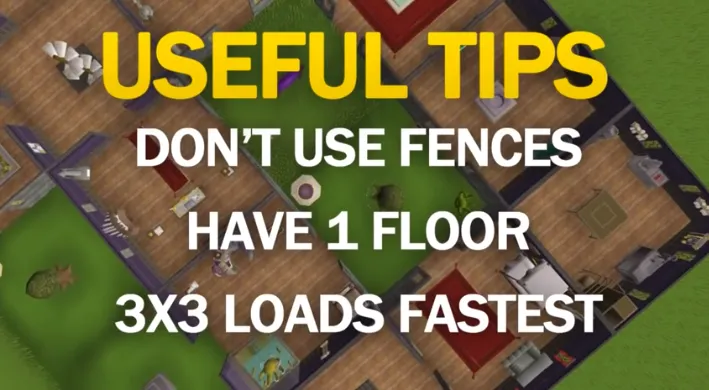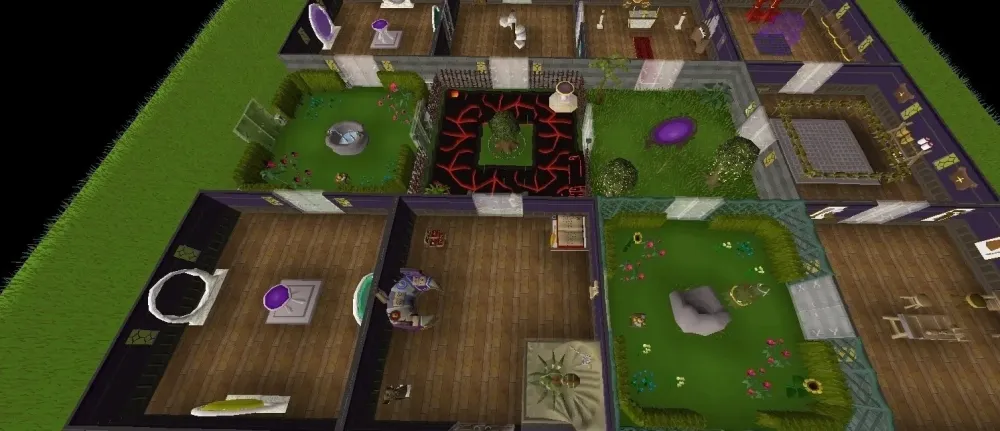Your cart is empty
OSRS Important Construction Levels for a Maxed Player-Owned House

Construction in Old School RuneScape (OSRS) is a key skill that transforms your player-owned house (POH) into a versatile hub for teleportation, stat restoration, and storage. While it’s one of the most expensive skills to train, hitting specific Construction level milestones unlocks game-changing features that save time and enhance gameplay. Whether you’re a PvMer, skiller, or quester, this guide dives into the most important Construction levels to aim for, helping you prioritize your grind for maximum efficiency. Let’s explore the must-have unlocks and why they matter.
Construction isn’t just about building fancy furniture—it’s about creating a centralized base that streamlines your adventures. A well-built POH offers teleports to key locations, restores your stats instantly, and even saves bank space. The skill is costly, often requiring millions of gold, but the rewards are unmatched. By focusing on the right levels, you can avoid overspending while unlocking the most impactful features. Below, we break down the critical Construction levels and their benefits.
Starting Your Construction Journey

Before diving into the levels, you need a house. Purchase one from an estate agent in Varrock, Falador, Seers’ Village, East Ardougne, Hosidius, or Prifddinas for 1,000 coins. Your starter house begins in Rimmington with a parlour and garden. To train, enter building mode via the house portal or options menu, and start constructing furniture using planks, nails, and a saw. Early levels are slow, but they set the foundation for bigger unlocks.
Level 1–15: The Basics
From level 1, you’ll work with regular planks and steel nails in the parlour. Build crude wooden chairs (level 1, 58 XP each) until level 4, then switch to wooden bookcases (level 4, 115 XP each) until level 9. At level 9, move to the kitchen and construct wooden larders (115 XP each) until level 15. These early builds are cheap but tedious. Completing the Daddy’s Home miniquest can jump you to level 8, saving some time.
Level 15–33: Transition to Oak
At level 15, switch to oak planks, which don’t require nails and offer 60 XP per plank. Build oak bookcases or oak chairs in the parlour until level 33. At level 33, oak larders in the kitchen (8 oak planks, 480 XP each) become the go-to for faster experience. This range is about building momentum while keeping costs manageable.
Key Mid-Level Unlocks for Utility
Mid-level Construction starts unlocking features that make your POH a practical tool. From teleports to storage, these levels are where your house begins to shine.
Level 40: Hiring a Butler
At level 40, you can hire a butler from the Servants’ Guild in East Ardougne, provided you have two bedrooms with beds in your POH. The butler fetches unnoted planks from the bank, speeding up training significantly compared to using Phials in Rimmington. This unlock is a game-changer for efficiency, costing 5,000 coins per eight services.
Level 47: Mounted Amulet of Glory
The mounted Amulet of Glory in the quest hall (level 47) provides unlimited teleports to Edgeville, Karamja, Draynor Village, and Al Kharid. It’s a massive time-saver for early-game players, eliminating the need to recharge glories manually. This is a must-have for anyone looking to optimize travel.
Level 50: Portal Chamber and Demon Butler
Level 50 unlocks the portal chamber, allowing you to build teleport portals to locations like Varrock, Falador, and Camelot. These portals, powered by runes, offer unlimited teleports, making your POH a travel hub. Additionally, you can upgrade to a demon butler (10,000 coins per eight services), who’s faster than the regular butler, further boosting training speed.
Level 55: Armour Stand
In the workshop, level 55 lets you build an armour stand to repair Barrows equipment at a discount compared to Bob in Lumbridge. For PvMers, this is a cost-effective way to maintain gear, especially if you’re running Barrows or other equipment-heavy content.
High-Level Milestones for a Maxed POH
High-level Construction is where your POH becomes a powerhouse. These unlocks are expensive but provide unparalleled convenience, especially for endgame players.
Level 70: Superior Garden and Spirit Tree
At level 70, you can build a superior garden, which supports features like the spirit tree (level 75 Construction, 83 Farming required). A spirit tree in your POH connects to the spirit tree network, offering teleports to places like the Tree Gnome Stronghold. This is a huge boon for clue hunters and farmers.
Level 75: Gilded Altar
The gilded altar in the chapel (level 75) boosts Prayer XP by 350% when used with two lit burners. It’s a cornerstone for training Prayer efficiently, letting you use bones directly in your house. Many players stop here if their goal is Prayer training, as it’s one of the most impactful unlocks.
Level 83–85: Max House Essentials
Level 83 is often considered the “max house” benchmark for most players. With boosts like a crystal saw (+3) and spicy stew (+5), you can access:
- Ornate Rejuvenation Pool (level 90): Restores hitpoints, prayer, run energy, special attack, and cures poison/venom.
- Fairy Ring (level 85): Connects to the fairy ring network for teleports across Gielinor.
- Occult Altar (level 90): Switches between all spellbooks (standard, Ancient, Lunar, Arceuus) without leaving your house.
These features make your POH a one-stop shop for PvM prep and skilling. Level 84 with a +6 boost (teak shelves tea + crystal saw) or level 85 with a +5 boost (spicy stew) ensures you can build everything without relying on RNG-heavy stew boosts.
Level 90–92: Endgame Luxury
For those pushing further, level 90 unlocks the occult altar natively, while level 91 grants the ornate jewellery box, combining unlimited charges for Rings of Dueling, Games Necklaces, and more. At level 92, the crystalline portal nexus stores up to 18 teleport destinations, consolidating your portal chamber into one sleek interface. These are luxury upgrades for players with deep pockets.
Cost and Training Tips
Construction is notoriously expensive, but strategic planning can ease the burden. Here’s how to approach it:
Training Methods by Level
| Level Range | Method | Materials | XP per Build |
|---|---|---|---|
| 1–15 | Crude Chairs, Bookcases, Larders | Regular Planks, Steel Nails | 58–115 |
| 15–33 | Oak Bookcases, Chairs | Oak Planks | 120–180 |
| 33–52 | Oak Larders | Oak Planks | 480 |
| 52–74 | Mounted Mythical Capes (if available) | Oak Planks, Mythical Cape | 370 |
| 74–83 | Oak Dungeon Doors | Oak Planks | 600 |
For faster but pricier training, use mahogany tables (level 52, 840 XP each) or gnome benches (level 77, 720 XP each). Mahogany Homes is a slower, cheaper alternative, offering variety through NPC contracts.
Cost-Saving Tips
- Use a Demon Butler: At level 50, their speed outweighs the cost.
- Boost Wisely: Teak shelves tea (+3) and crystal saw (+3) are reliable for hitting level 90 unlocks at 84.
- Buy Planks Smart: Check Grand Exchange prices regularly to avoid spikes.
- Mahogany Homes for Irons: Rewards like plank sacks help resource-limited accounts.
Is 99 Worth It?
Level 99 Construction unlocks the skillcape, offering unlimited POH teleports, and allows a maximum of 33 rooms. However, most players stop at 83–85, as the core unlocks are accessible with boosts. Going to 99 costs upwards of 250M GP, so it’s only worth it for completionists or those wanting the prestige.
By focusing on levels 47, 50, 55, 75, and 83–85, you’ll build a POH that rivals the best in Gielinor without breaking the bank. Prioritize what fits your playstyle—whether it’s PvM utility or skilling efficiency—and your house will become your greatest asset.
